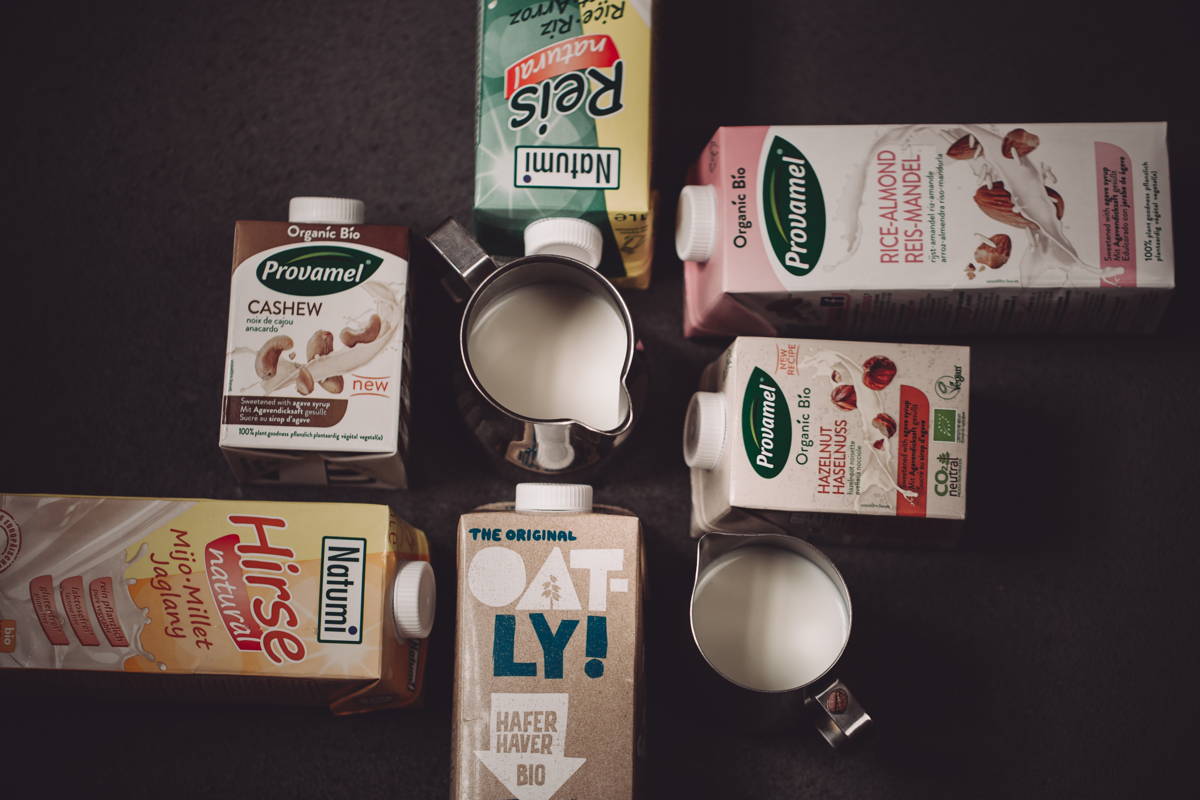

A contribution from Leo Schulze in the category #Coffee Knowledge from 17 August 2020
Whether cappuccino, cafe au lait or latte macchiato, many popular coffee drinks are crowned with milk froth. But there’s no law that says that froth must come from cow’s milk. Obviously, there are some alternatives but some work better than others. So we’ve done the research and tested the alternatives for you.
The alternative milk chart toppers in the lactose-free or vegan diets are soy, grain or nut milk. We’re not here to get into the larger conversation of milk or dairy. From a coffee perspective, all we really want to know is how each alternative pairs best with coffee, specifically, a cappuccino. So, we tested different types of grain and nut milks with a cappuccino. Of course we’re aware that according to the law, a milk from grain or nut can’t be called „milk“. But for simplicity’s sake we’re just going to bend for this blog and call them all milks. For our comparison, each milk was heated, foamed and each prepared with an espresso Yirga Santos as cappuccino (1 part espresso and 2 parts milk).
Milks in the test
- Soy milk
- Rice milk
- Almond milk
- Rice & Almond milk
- Coconut milk
- Oat milk
- Spelt milk
- Millet milk
- Cashew milk
- Hazelnut milk
Soy milk
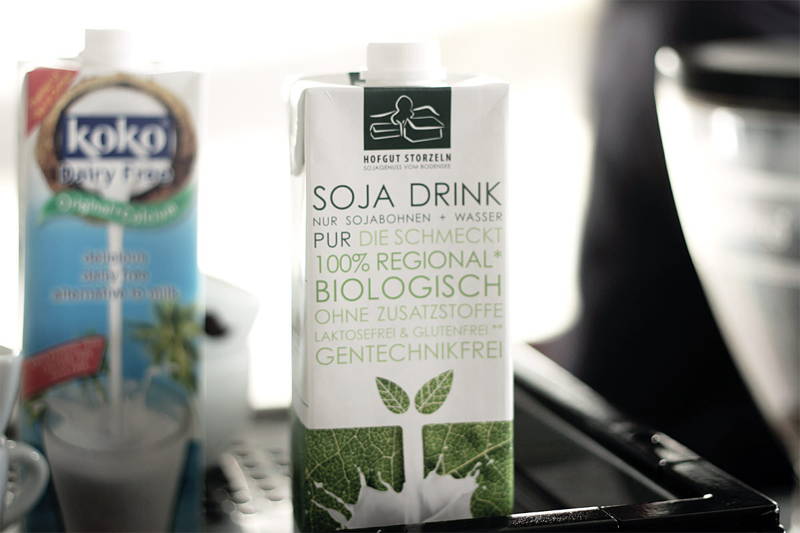
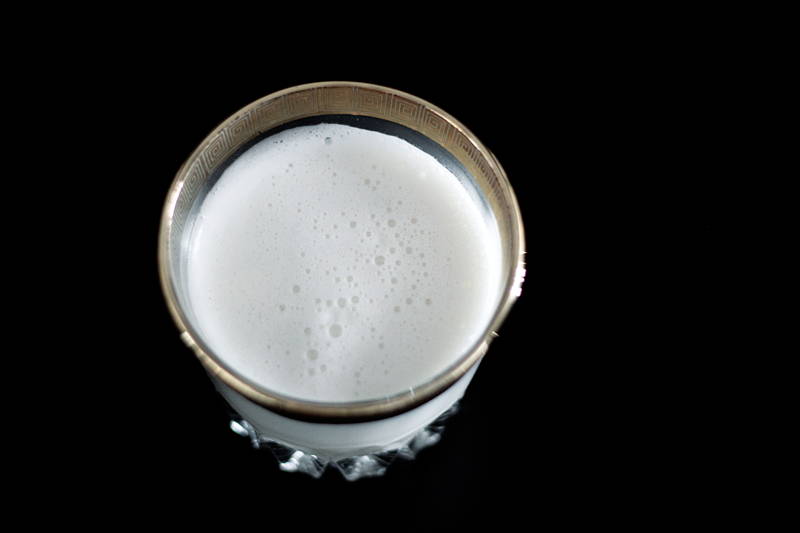
Soy milk is a vegetable drink made from soybeans. Soy is rich in fiber, consists of 36 % protein and is naturally a very good source of protein. The carbohydrate content of approximately 2 g, and the fat content of around 2.2 g are below that of cow’s milk (carb 4.8 g, fat 3.5 g). Compared to cows‘ milk, however, soy milk contains much less vitamin B2 and calcium. But how does it taste? Soy milk has a somewhat earthy smell and grainy flavour. Despite the high protein content, the soy milk foams only a little bit and in the cappuccino, the soy milk offers little in terms of taste and rather waters down the cappuccino.
Rice milk
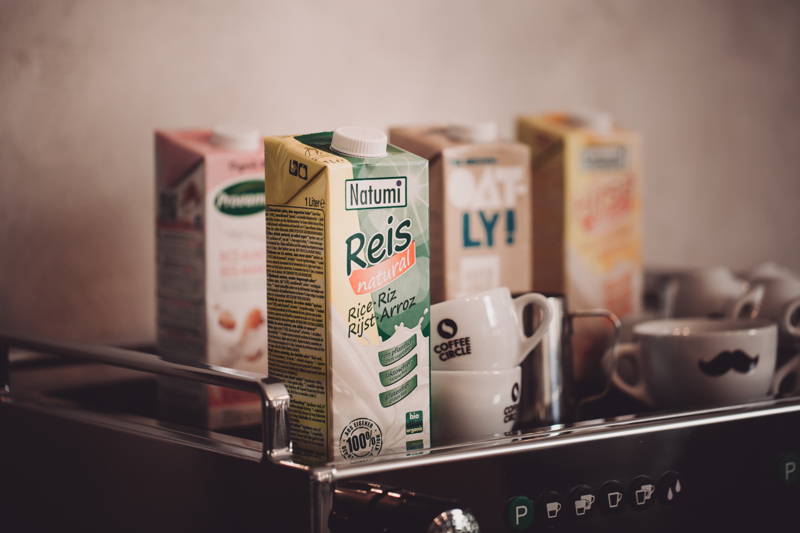

Rice milk consists of whole grain rice and water, which is emulsified with oil. It smells and tastes exactly like rice. Rice milk stems from a grain which scores rather low in terms of nutrients, vitamins and protein. However, to its benefit it has proved itself a great ally to vegans and those with lactose, protein, or gluten allergies. A rather pleasant natural sweetness is produced from the fermentation of the rice in the production process and is also rich in carbohydrates coming in at around 10 %. For all the love we have for rice milk, it’s just not suitable for foaming since the protein content is so low (0.2 %). The foam dissolves quickly and the milk turns to rather unfavourable watery-froth. On its own, the thin milk tastes very strongly of rice and the whole thing reminds us a little too strongly of milk-rice – a popular kids meal. However, if you’re not too fussy about foam, the taste of the rice surprisingly disappears in the espresso and pairs rather well. In Cappuccino, the rice milk has a very pleasant taste, and is reminiscent of a light latte. As rice milk, like all grains, is nutrient-poor, vitamins or calcium are often added. So more and more, you’ll find rice milk with added vanilla or chocolate flavours – or blended with almond or soy milk.
Mandelmilch
Almond milk is a vegetable drink made from almonds and water. It’s produced by pouring warm to hot water over freshly ground and roasted almonds and leaving it for several hours. Almonds are a healthy food and it’s said just 60 g almonds per day can have an extremely positive effect on our health. They offer protection against diabetes, lower cholesterol levels, strengthen the bones and are a source of valuable fatty acids, minerals and trace elements. In addition, almonds are a basic food, so they fit wonderfully into any healthy and basic nutritional plan. Scent-wise, almond milk smells subtly of – you guessed it – almonds. But almonds are light to begin with. Frothed, almond milk is particularly creamy and tastes only slightly acidic compared to the more discreet almond. In a cappuccino the bitter taste is foregrounded even more.
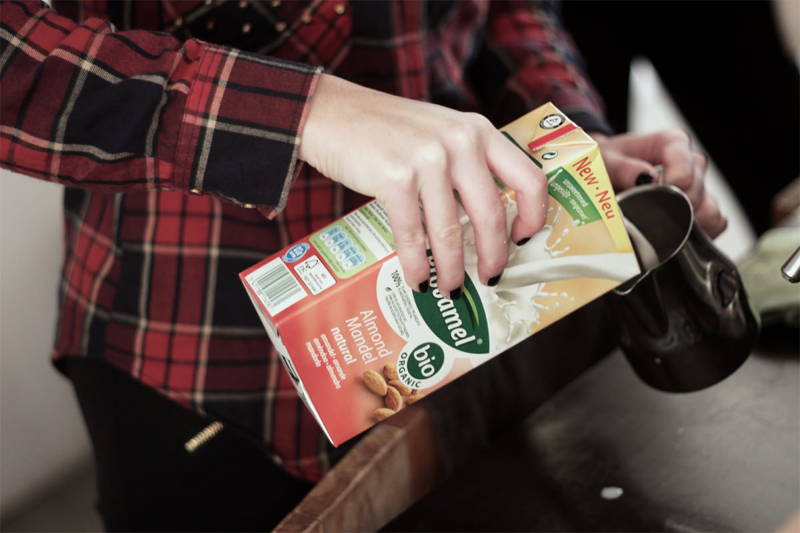
Rice & Almond milk
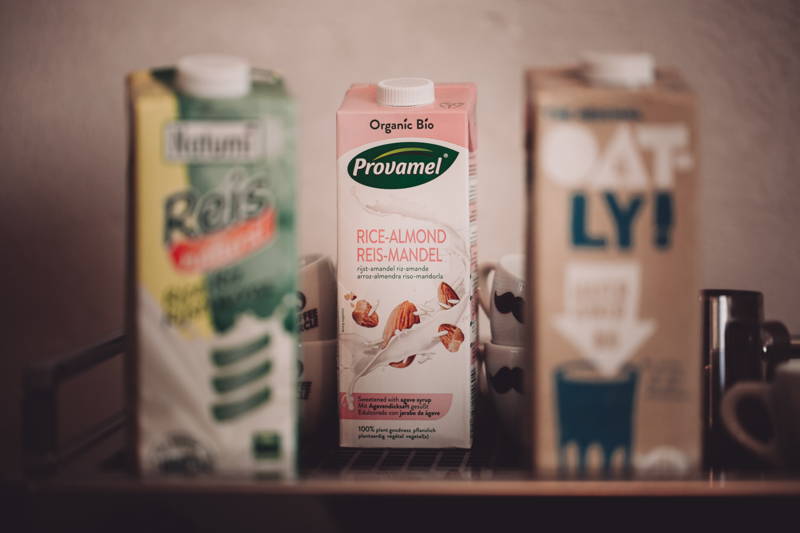
Rice & almond milk is one of the increasingly popular milk-mélanges. This combination gives you the natural sweetness of the rice milk with the fine nutty taste of the almond milk, which at the same time counteracts the overpowering rice taste. The combination is very harmonious and neither of the two main features dominates the other. In our comparison, however, the rice-almond milk carries the most carbohydrates. The foam quality is fine but on the watery side. However, it still has a fine consistent strength. It’s only during the foaming that the scent of almonds is most present. The blend works quite well with a cappuccino. The chocolate aromas of the Yirga Santos are propped up nicely by the scent of almonds and the sweetness of the rice milk.
Coconut milk
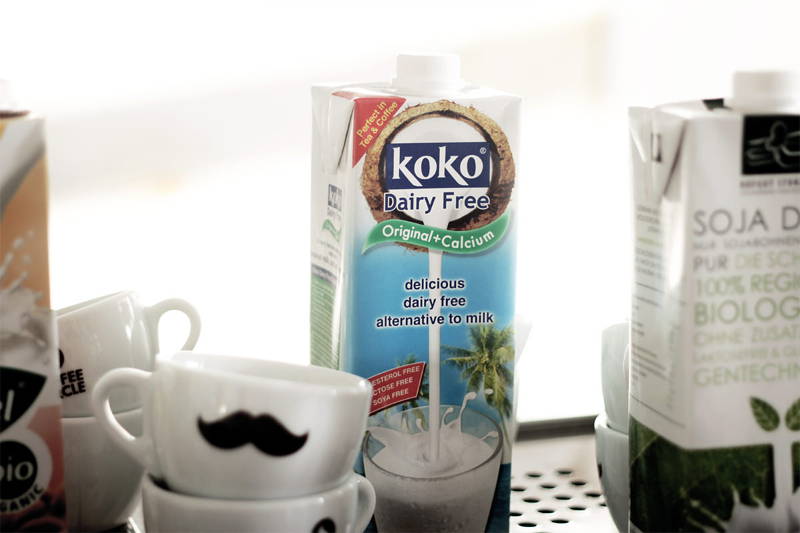
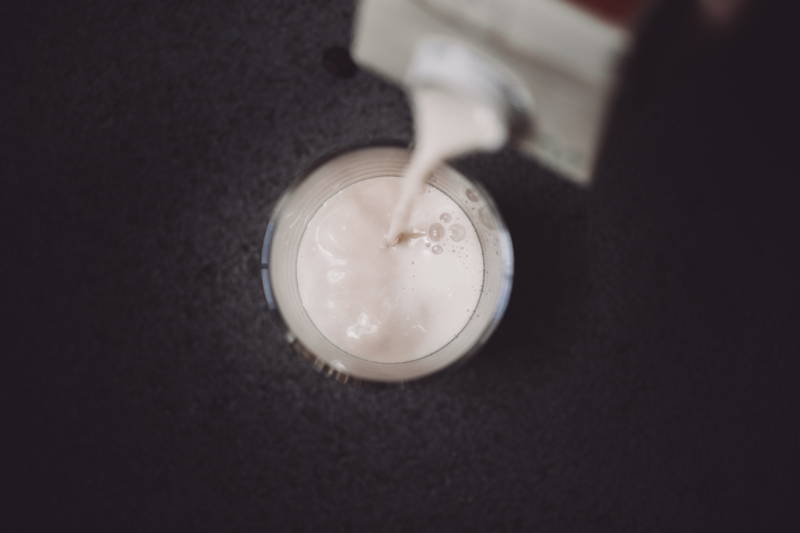
Coconut milk is not produced in the nut. It is produced by purifying the pulp with water and then pressing the mixture through a cloth. An aromatic, milky liquid is produced with usually about 15 % to 25 % fat content, depending on the quantity of water used. The remaining, fibrous mass is extracted again with boiling water and squeezed out, resulting in a thinner coconut milk. Therefore, the fat and water content separates from each other in the packaging and must be mixed again, if necessary, by shaking. Due to its high proportion of medium-chain fatty acids, the coconut milk is used by the body as a fast energy supplier and – as opposed to other fats – is only seldom incorporated into fatty tissue which gives it an added benefit for weight loss. Contrary to our expectations, the coconut milk is rather odourless. The milk is difficult to foam and the resulting fine-pored foam quickly evaporates. The foamed milk tastes slightly coconutty and gives the cappuccino a subtle freshness. Compared to soy milk in cappuccino, the taste of the coconut milk is more present. And though it’s not exactly rich, it is less watery.
Oat milk
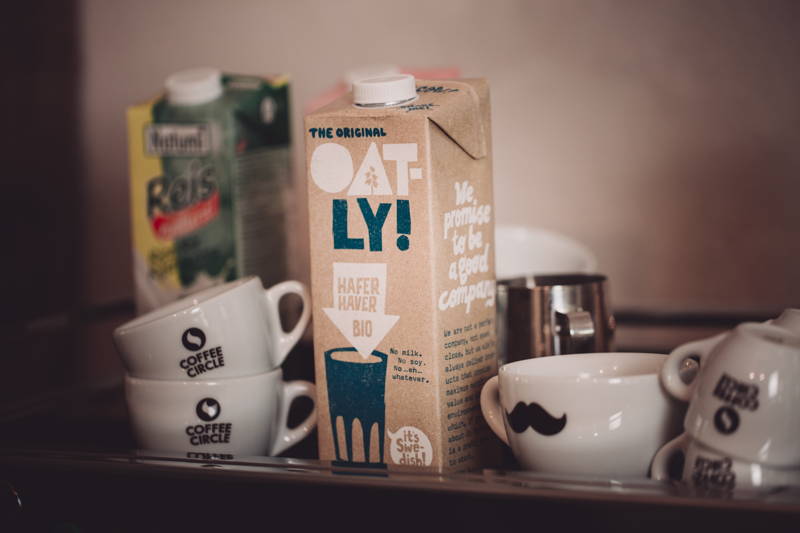
Oat milk belongs to the cereal drink family along with rice, spelt, millet or rice milk. It’s made from fermented grains or flour. Cereal milk can be obtained from rice, oats, spelt, rye or single grain wheat. Due to the production-related conversion of starch into a simple sugar, the oat milk tastes pleasantly sweet. Of course the oat milk is free of lactose and egg white so it vegan-friendly and good for allergy sufferers. However, due to the strong taste of the grain, oat milk isn’t for everyone. But in a cappuccino the strong grain taste is hardly noticeable and there’s an overall sweet note. Unfortunately, the espresso gets buried under the weight of the oat and is hardly perceptible. That being said, oat milk is a champ when foamed and with a little practice it works well for oat-latte art!
Dinkelmilch
Spelt milk belongs to the group of cereal milks. Cereal milk is like cow’s milk in appearance. The nutritional value depends on the type of cereal used and is comparable to cows‘ milk in terms of vitamins and minerals, but not protein. Cereal milk contains very few high-quality proteins, calcium and certain vitamins. However, these can be added. Spelt milk has a grainy smell and more foam volume is produced than with the other tested varieties. The taste of the foamed milk also has more peculiarities than the other varieties. Lattes are easiest with spelt milk compared to the other varieties of milk and the cappuccino à la spelt has a pleasant caramel taste and is only slightly grainy.
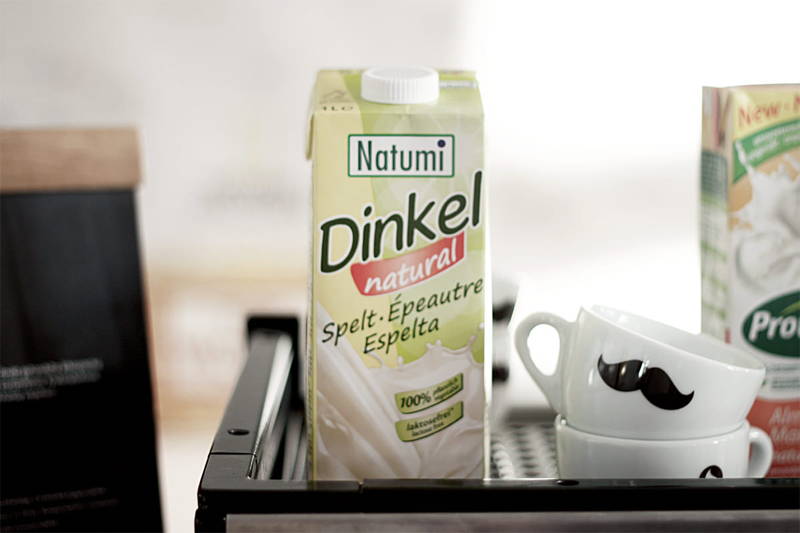
Millet milk
Millet milk is also one of the cereal drinks and is also produced the same way. The color is yellowish compared to oat milk and the taste is even stronger. It’s rich in carbohydrates and low in fat with its fat content of only 1 % . However, millet milk is only suitable for foaming to a limited extent. The foam settles quickly and then gets watery. The taste is not a great fit with espresso as the millet is just a little too dominant.
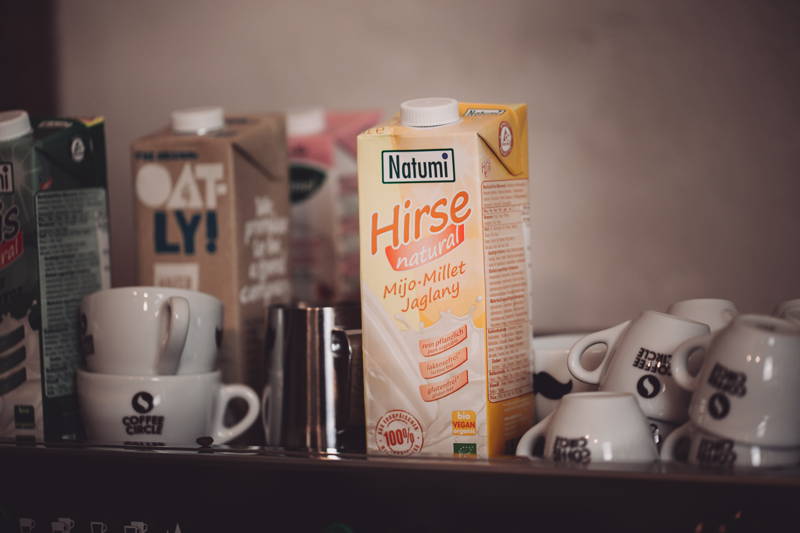
Cashew milk
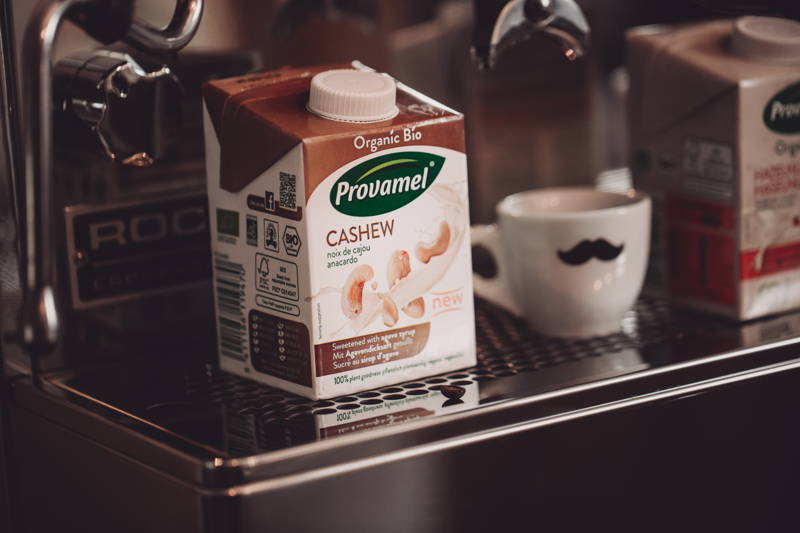
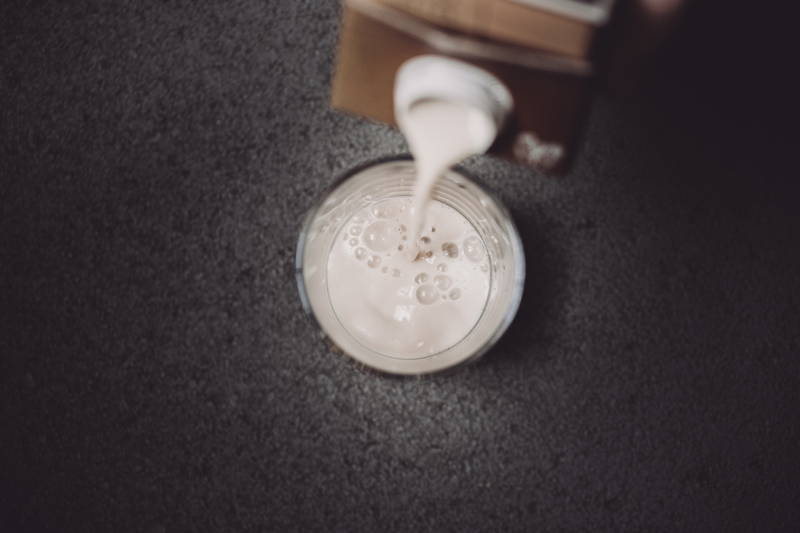
In addition to the many cereal drinks, cashew milk belongs to the nut family. In principle, it consists only of cashew nuts and water. Like the hazelnut milk, cashew milk is rich in fat and low in carbohydrates. The taste of the milk is very dominant and cannot be directly attributed to an ordinary cashew nut. The strong taste of the milk does put it on the weaker end of good blends with espresso. It doesn’t foam all too well and the foam dissolves quickly and the watery mass begins to separate. „Espresso and Cashew “ has a nice ring to it but leaves little for the palate, as the taste has not convinced us.
Hazelnut milk
Hazelnut milk tastes just like you’d expect. The watery milk has an original and strong hazelnut flavour. The hazelnut aromas fit very well to our Yirga Santos. The foam quality, on the other hand, is rather poor: liquid and foam quickly separate. Like cashew milk, hazelnut milk is rich in fat and low in carbohydrates. Unlike cereal milk, hazelnut milk has no natural sweetness. For this reason, sugar is often added, which should be taken into consideration when buying it.
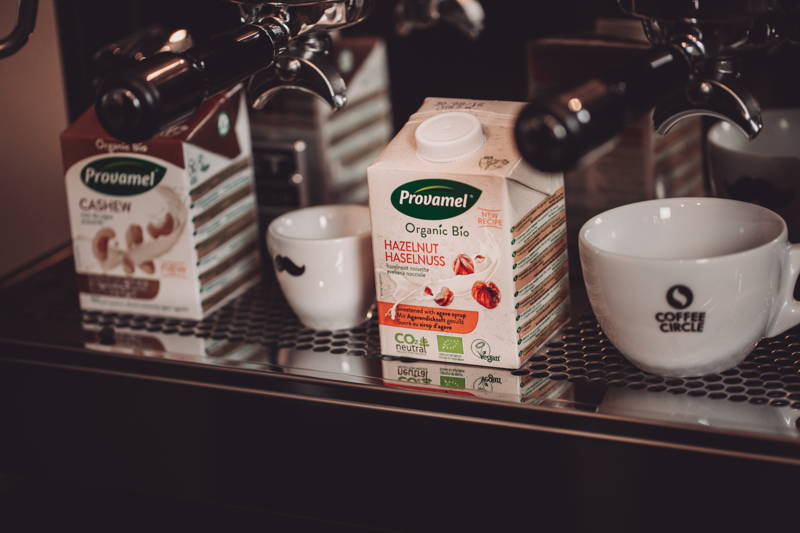
Why does my milk curdle?
Who hasn’t been there: the coffee is ready, ooh the anticipation, milk is added and then … those curdly flakes in the coffee. You can chalk this up mostly to the fact that the proteins in the milk lose their solubility, stick together and form sad clumps. This happens particularly quickly with older milk and hot coffee just serves as a catalyst. On the other hand, it’s also partly due to the acidity in the coffee. But: high acid content goes back to roasting and we like to believe we cut down on the disappointing curdle effect because we roast our coffees slowly and gently, with low temperatures for about 13-18 minutes. Many acids are already degraded. Industrially roasted coffee, on the other hand, contains comparatively large amounts of fruit acids, since it’s roasted quickly and hot. In addition, the higher the acid content in the coffee, the longer it’s kept warm. Therefore, the milk in „old“ coffee curdles faster than in freshly brewed.
These coffees taste great with milk:

Leo Schulze
Leonard ist seit 2015 nicht mehr wegzudenkender Teil vom Marketing-Team. Inzwischen hat er zum Kaffee-Experten entwickelt, führt Produkttests durch oder schult neue Kollegen in der Kaffeezubereitung. Sein Favorit? Fruchtige, helle Röstungen mit dem Hario v60 Handfilter zubereitet.



